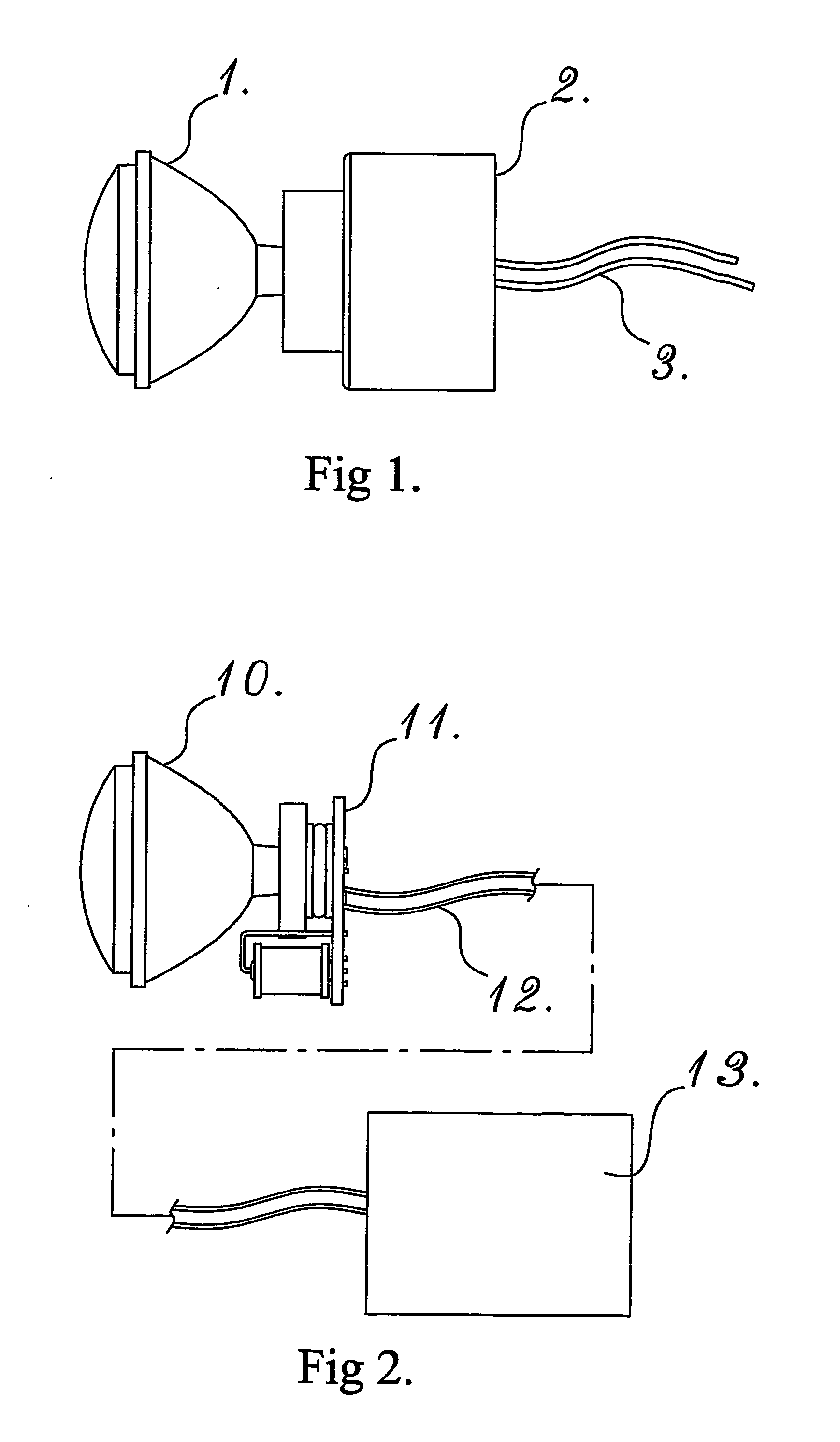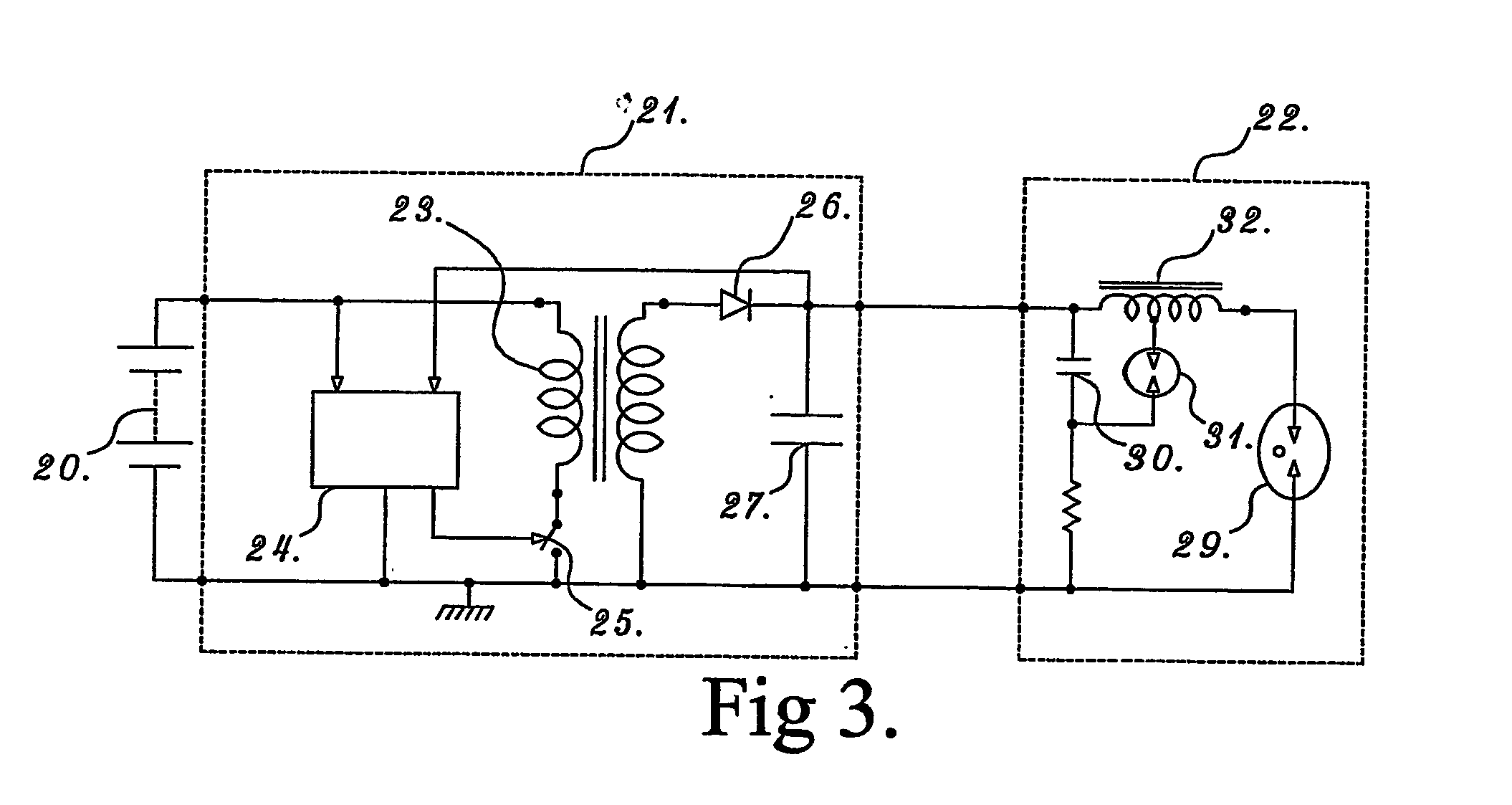Arc Lamp Improvements
a technology of arc lamps and arc lamps, which is applied in the direction of sustainable buildings, electric variable regulation, instruments, etc., can solve the problems of limiting the number of ways in which arc lighting systems can be positioned, the need for double insulated cables to withstand a 6 kv ignition spike without breakdown, and the inability to simply power arc lamps from low voltage batteries. , to achieve the effect of improving the reliability of lamp ignition, simple hydrodynamics, and less need for hea
- Summary
- Abstract
- Description
- Claims
- Application Information
AI Technical Summary
Benefits of technology
Problems solved by technology
Method used
Image
Examples
Embodiment Construction
[0034]FIG. 1 shows an arc lamp of the prior art. It consists of a lamp 1 physically attached and electrically connected to a ballast package 2. This ballast package is connected by low voltage cable 3 to a battery pack (not shown). All the electronics required to strike and maintain the arc in the arc lamp is included in the ballast package, including the relatively heavy ballast. Thus the ballast package is both substantially larger and heavier than the lamp itself. This weight is a considerable disadvantage when the lamp assembly is to be head-mounted.
[0035]FIG. 2 shows an embodiment of an arc lamp made in accordance with the present invention. It includes a lamp 10, which may be the same as the lamp of FIG. 1. It is attached to a trigger printed circuit board 11, containing only those electronic components required to generate the very high voltage spike required to strike the arc of the arc lamp. It is connected, via a cable 12 rated at 300V capacity, to a remote ballast pack c...
PUM
 Login to view more
Login to view more Abstract
Description
Claims
Application Information
 Login to view more
Login to view more - R&D Engineer
- R&D Manager
- IP Professional
- Industry Leading Data Capabilities
- Powerful AI technology
- Patent DNA Extraction
Browse by: Latest US Patents, China's latest patents, Technical Efficacy Thesaurus, Application Domain, Technology Topic.
© 2024 PatSnap. All rights reserved.Legal|Privacy policy|Modern Slavery Act Transparency Statement|Sitemap



